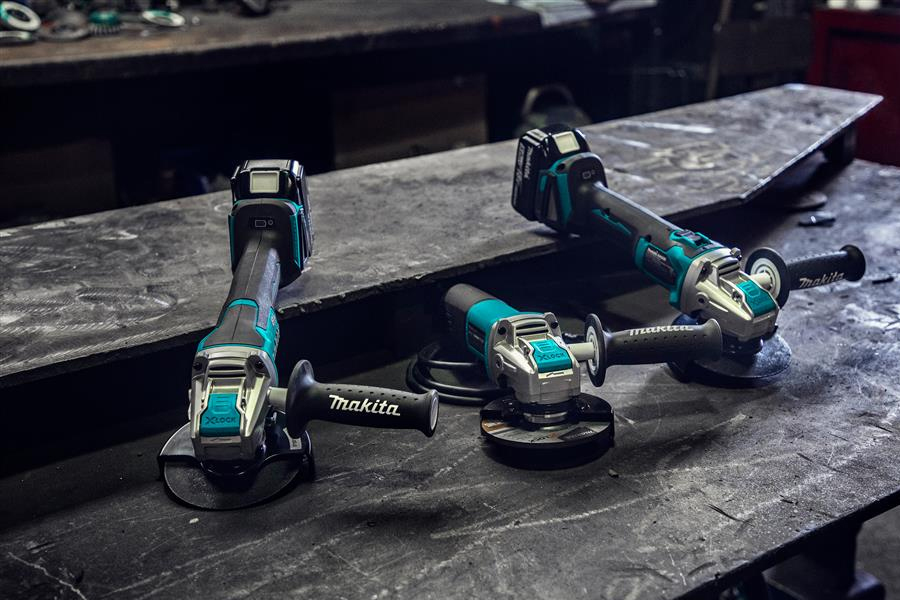Grind with Confidence: Harnessing the Potential of Angle Grinders
Angle grinders are powerful tools that can be incredibly useful for a wide range of applications. With the right knowledge and precautions, you can harness the potential of angle grinders and work with confidence. Here are some key points to keep in mind:
Safety First: Safety should always be your top priority when using angle grinders. Wear appropriate personal protective equipment (PPE), including safety glasses, gloves, hearing protection, and a dust mask. Make sure your work area is clear of debris and bystanders. Secure your workpiece firmly before starting.
Choose the Right Grinder: Select an angle grinder that suits your needs. Consider factors like power, disc size, and features such as variable speed control. Smaller grinders with disc sizes between 4 to 6 inches are suitable for most DIY and home applications, while larger ones with 7 to 9-inch discs are more suitable for heavy-duty tasks.
Select the Right Disc: Various types of discs are available for angle grinders, each designed for specific tasks. For grinding and cutting metal, use abrasive discs (grinding wheels or cutting wheels) designed for metalworking. For cutting masonry, stone, or concrete, use diamond blades or abrasive masonry cutting discs. Ensure the disc size matches your grinder’s specifications.
Read the Manual: Familiarize yourself with the manufacturer’s instructions and safety guidelines provided in the user manual. Each grinder may have specific operating procedures and safety precautions that you should be aware of.
Handling and Grip: Hold the grinder firmly with both hands while maintaining a good grip. Use the side handle (if provided) for better control and stability. Avoid overreaching or working in awkward positions that may compromise your balance.
Grinding Techniques: When grinding or cutting, use light and even pressure. Let the grinder’s speed and the weight of the tool do most of the work. Avoid excessive force, as it can lead to overheating and damage the disc. Move the grinder in a controlled manner, maintaining a consistent grinding angle.
Cooling and Rest Periods: Depending on the task and material, the grinder can generate heat. Take regular breaks to allow the grinder and disc to cool down, preventing overheating and potential disc failure. Consider having spare discs available, as they can wear out over time.
Sparks and Debris: Angle grinders produce sparks and debris, so work in a well-ventilated area and away from flammable materials. Consider using barriers or shields to contain sparks and protect yourself and your surroundings.
Proper Storage: Store your angle grinder in a secure place, out of the reach of children and away from moisture or extreme temperatures. Keep the power cord neatly coiled and inspect it regularly for any signs of damage.
Maintenance and Inspection: Regularly inspect your angle grinder, disc, and other accessories for any signs of wear, damage, or misalignment. Follow the manufacturer’s recommendations for maintenance and cleaning. If you notice any issues, have them addressed or repaired by a qualified professional.
Remember, the information provided here is a general guide. Always refer to the specific guidelines and safety instructions provided by the manufacturer of your angle grinder. Stay cautious, use common sense, and seek professional advice if needed.
Harnessing the potential of angle grinders can offer several benefits for various tasks and applications. Here are some key benefits:
Versatility: Angle grinders are highly versatile tools that can be used for a wide range of tasks. They are commonly employed for grinding, cutting, polishing, and shaping materials such as metal, masonry, stone, concrete, tiles, and more. With the right discs and attachments, angle grinders can tackle different materials and achieve various finishes.
Efficient Material Removal: Angle grinders are known for their high-speed rotation and powerful motor, enabling them to remove material quickly and efficiently. Whether you need to remove excess material, smooth rough surfaces, or cut through tough materials, angle grinders can expedite the process, saving you time and effort.
Precision and Control: Despite their power, angle grinders can be used with precision and control. The adjustable guard and side handle allow for stable handling and better maneuverability, enabling you to achieve accurate cuts or grinds. This control is particularly useful for tasks that require detailed work or intricate shaping.
Time and Cost Savings: The efficiency and versatility of angle grinders can result in significant time and cost savings. With their ability to remove material rapidly and handle multiple tasks, you can complete projects more quickly and effectively. This can be particularly beneficial for professionals working on construction sites or DIY enthusiasts tackling home improvement projects.
Adaptability to Different Spaces: Angle grinders are portable and compact, allowing for easy maneuverability in tight or confined spaces. Their size and shape make them suitable for working in corners, edges, or other hard-to-reach areas where larger tools may not be as effective.
Restoration and Refurbishment: Angle grinders are often used for restoration and refurbishment projects. Whether you’re restoring metal surfaces, removing rust or paint, or refinishing worn-out materials, angle grinders can help breathe new life into old objects or structures.
Flexibility in Disc Selection: Angle grinders offer a wide range of disc options, each designed for specific applications. From abrasive discs for grinding and cutting metal to diamond blades for masonry and concrete, you can easily switch between discs to accommodate different materials and achieve desired results.
Professional and DIY Applications: Angle grinders find extensive use in both professional and do-it-yourself (DIY) settings. They are common tools in industries such as construction, metalworking, welding, automotive, and fabrication. Additionally, homeowners can utilize angle grinders for tasks like tile cutting, patio refurbishment, or metal fabrication, making them versatile tools for various projects.
Remember, while angle grinders offer numerous benefits, it’s essential to prioritize safety and follow proper operating procedures to mitigate risks and ensure successful outcomes.



